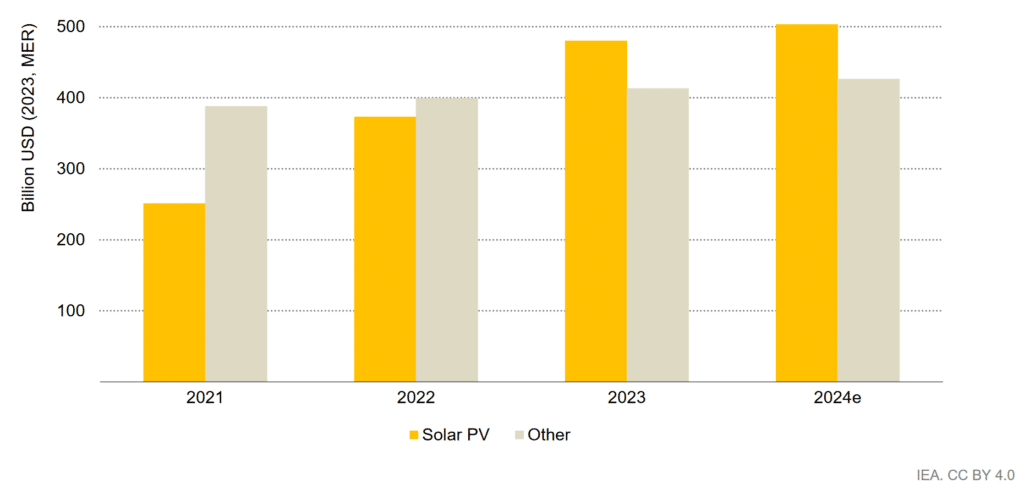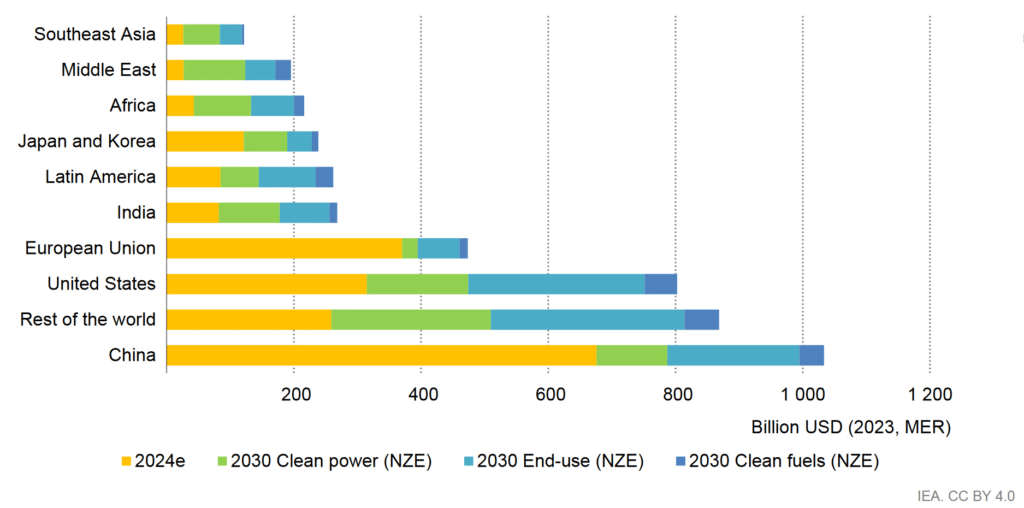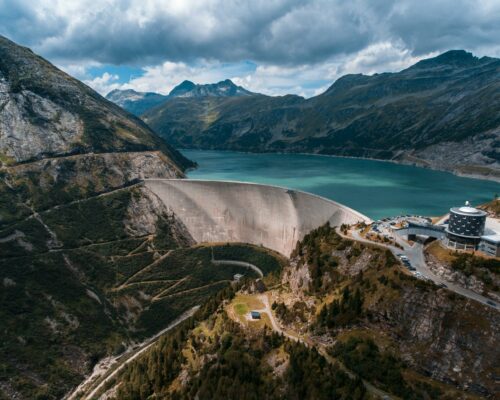Energy Storage Systems and Grid Investments Crucial For Enabling Renewables Integration in Asia
24 July 2024 – by Viktor Tachev
In the last decade, we have witnessed tremendous advancements in clean energy technologies, with solar cells, wind turbines and batteries becoming more efficient and sustainable. Meanwhile, energy storage systems and grid infrastructure are also getting smarter, more flexible and more robust. These advancements have also been paired with a progressively decreasing cost curve. From a technology perspective, the tools to accelerate the clean energy transition are there. However, making the most out of them requires substantial investments across the entire ecosystem, not only in expanding clean energy capacity but in scaling up the accompanying infrastructure to accommodate it.
Clean Energy Technology Innovations Are Advancing
Sixteen solar cell efficiency records were broken over the past three years. This is largely the result of the innovations taking place in the R&D facilities of the China-based Longi company. By blending traditional silicon solar cells with perovskite, a natural mineral hailed as a miracle material, the world’s biggest solar panel manufacturer achieved a 34.6% power conversion efficiency. The result is 7% higher than the efficiency record for standard silicon solar cells that dominate installed capacity nowadays. European producers are already planning to ship out the first customer orders for the innovative technology this year.
The breakthrough means solar power is getting closer to the 36% global average efficiency for electricity production from fossil fuels. It has also already surpassed the efficiency of coal and can soon do so for all fossil fuels. Wind power, for example, has already done that.
Furthermore, unlike fossil fuels, breakthrough innovations in clean technologies won’t be stopping anytime soon, with China being the main engine. For example, the country announced plans to launch the world’s biggest solar plant by 2027. The mammoth 8 GW installation will be accompanied by 4 GW of wind and 5 GWh of energy storage capacity.
The country is also developing the world’s biggest wind farm, with a 43.3 GW capacity. In addition, this year, China installed the world’s largest wind turbine.
Increased Focus on Grid, Battery and Energy Storage Systems
Technological advancements are making grids smarter, increasing their capacity and efficiency. For example, dynamic transmission line rating improvements enable the real-time calculation of power-carrying capacity based on local conditions. Advanced power flow control allows redirecting power from overloaded lines to those with available capacity. Through employing topology optimisation software, grid developers are becoming better at identifying the optimal system design for more efficient operation.
Battery technology innovations are also progressing, with recent advancements in addressing existing technical and scalability challenges. As a result, batteries are becoming more efficient and affordable and have improved capacities. Besides lithium-ion, other types of batteries, including iron air, sulfur-based, metal-free and flow batteries, are emerging as promising technologies.
Their recycling is also improving, which is crucial, considering that the supply of the metals used for battery cells is already stretched thin. According to forecasts, the demand for lithium could increase 20 times by 2050. While recycling facilities can currently recover nearly all the cobalt and nickel used in battery cells, recent scientific breakthroughs promise to capture up to 100% of the aluminium and 98% of the lithium as well.
Taking Advantage of Green Technology Innovations is Becoming More Affordable
Enabled by their mass deployment and ambitious policy support, innovations in solar cells, wind turbines, energy storage systems and grid technologies are becoming increasingly available at competitive costs. Going forward, the bigger the deployment, the more cost-efficient they will get, per Swanson’s law.
Solar and wind power have already established themselves as the cheapest sources for new power generation. In 2023, over 95% of new utility-scale solar PV and new onshore wind capacity had lower generation costs than new coal and natural gas plants.
The IEA notes that throughout 2023, solar PV module prices declined by 30%. Paired with batteries also becoming cheaper, this opens up huge opportunities for utility-scale projects and residential use.
Investments in Grid Flexibility and Storage Crucial to Accommodate the Clean Energy Growth
Ember notes that, given the excess supply and the rapid drop in battery storage costs, solar power, for example, is limited only by how fast it can be connected to the grid.
The momentum behind investments in grids and energy storage technologies is accelerating, and they will reach USD 400 billion in 2024. However, the spending will be highly concentrated in advanced economies and China.

In fact, the IEA notes that China is the only country globally that has reached the levels of clean energy investments needed in a net-zero-aligned world. Throughout 2023, it was responsible for a third of the global total. More importantly, the country has explicitly focused on building its grid infrastructure, including long-distance transmission lines. Over the past decade, China accounted for over a third of the global grid expansion. This has allowed it to reduce curtailment despite the tremendous amounts of new capacity added every year.
On the other hand, countries like Vietnam have learned the hard way that investments in new clean power capacity should be accompanied by adequate grid infrastructure spending. Between 2018 and 2019, the country grew its clean energy capacity by 39.4%. The following year, it jumped another 47.2%. However, at that point, technical issues and policy changes impeded the growth. As a result, the generated clean energy started going to waste due to transmission lines’ failure to bear the supply spikes. Furthermore, between 2021 and 2023, the country halted the progress of nearly 40 GW of new utility-scale solar and wind capacity announcements.
Insufficient grid infrastructure is also evident in other Southeast Asian countries, like Indonesia, where geographical and policy factors challenge transmission line buildup. Similar is the situation in Nepal, where electrifying rural and remote areas remains complicated due to rugged terrain and inadequate grid infrastructure. In Myanmar, the outdated and limited electricity grid leads to significant long-distance losses.
Investing in grid infrastructure and improving interconnectivity is a critical step in addressing these problems.
Panellists participating in the “Enabling Renewables Integration” session at the AtoZero Conference in Singapore, which Energy Tracker Asia was a media partner of, were clear that mass deployment of solar and wind power is just one variable in the energy transition equation. Investments in grid stability, advanced grid management and accompanying technologies like battery and non-battery storage to solve intermittency issues are critical elements that need to top the global energy agenda. According to the experts, measures that could help on that front include innovation in financial instruments, a bigger focus on blended financing mechanisms and policy intervention to ease project developers by minimising bureaucracy and streamlining project approvals.
Proportional Growth of Investments in Energy Storage Systems and Clean Power Deployment Critical
Currently, 85% of clean energy investment is in the advanced economies and China. The IEA notes that a 1.5°C-aligned world requires a sixfold increase in emerging and developing economies outside China by 2035. According to the agency, for every dollar invested in battery storage in advanced economies and China, only one cent is invested in other emerging and developing economies.
These discrepancies are evident in regions like Southeast Asia. Its USD 72 billion in clean energy spending throughout the past three years accounts for just 2% of the global total. The region must increase this figure to over USD 130 billion by 2030 to achieve its long-term climate targets. The IEA notes that aligning with a net-zero scenario requires Southeast Asian nations to quadruple their clean energy investments by the decade’s end.

Successfully raising the needed capital and accelerating the clean energy transition requires decisive policy intervention to lure investors, ease project developers’ burdens, and accelerate the development of grids and clean energy supply chains. Policies, including feed-in tariffs, subsidies, tax incentives and offtake from clean power producers, like China, can lead to a rapid increase in investments and deployment.
Building fully integrated regional grids, long-distance transmission lines and grid-scale storage technologies is imperative for Southeast Asia so that countries can start capitalising on their clean energy potential without worrying about grid stability and variations. Succeeding in this mission requires overcoming the fiscal and technical challenges in different countries and supporting smaller economies with infrastructure investments.
Prioritising Grid and Energy Storage Crucial For the Clean Energy Transition
Studies suggest that renewables provide more useful energy than fossil fuels. Clean power sources like solar and wind power also bring notable financial, environmental, health and energy security benefits. Furthermore, the continued advancements in recycling clean energy technologies like wind turbine blades and batteries are bringing the industry closer to circularity.
However, as the saying goes, “there is no transition without transmission,” and for governments to unlock the full benefits of the renewable energy shift, investments in grid and energy storage systems and infrastructure should become a prime focus area.
by Viktor Tachev
Viktor has years of experience in financial markets and energy finance, working as a marketing consultant and content creator for leading institutions, NGOs, and tech startups. He is a regular contributor to knowledge hubs and magazines, tackling the latest trends in sustainability and green energy.
Read more







